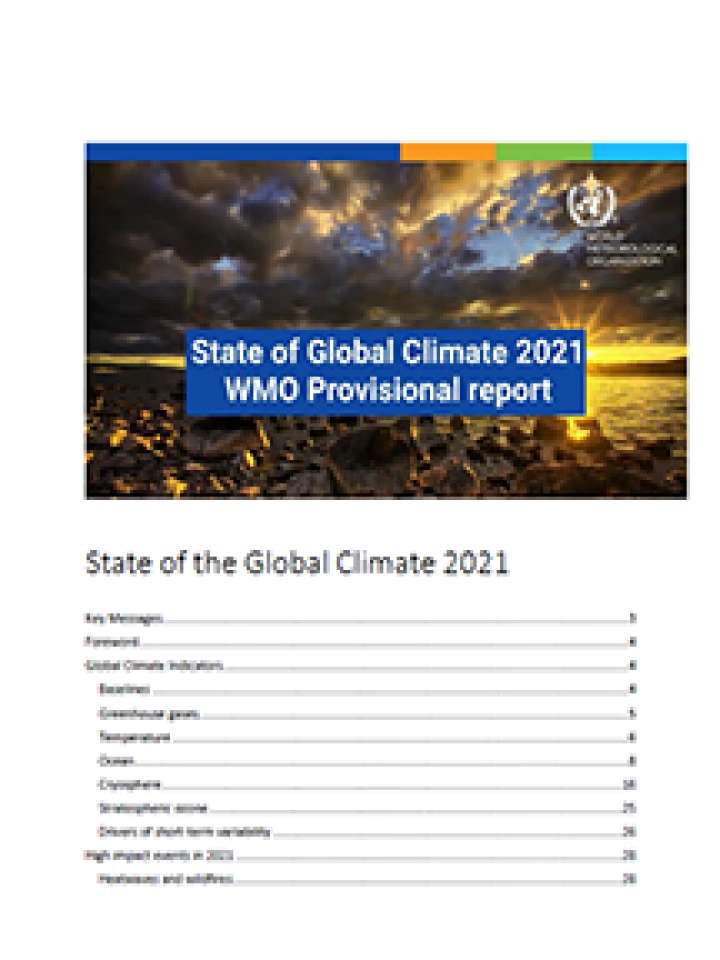State of the global climate 2021: WMO provisional report
This WMO Provisional report discusses the State of the Global Climate in 2021, presenting various key messages of climate-related disasters across the globe. The report presents the following key messages:
- Atmospheric concentrations of the major greenhouse gases, carbon dioxide, methane and nitrous oxide, continued to increase in 2020 and 2021.
- Global mean temperature in 2021 (January to September) is around 1.08 ±0.13 °C above the 1850-1900 pre-industrial average and the year is likely to be between the 5th and 7th warmest year on record.
- The rate of global sea level rise has increased since satellite altimeter measurements began in 1993, reaching 4.4 mm/yr between 2013 and 2021.
- Changes in the global cryosphere in 2021 were consistent with recent multi-decadal trends, with below-normal Northern Hemisphere spring snow cover and end-of-summer Arctic sea ice area, negative mass balances on mountain glaciers and the Greenland and Antarctic Ice Sheets, and near-normal Antarctic sea ice cover.
- The summer heat wave in western North America took a toll on the region's mountain glaciers, with exceptional mass losses in the Cascade, southern Coast, and Rocky Mountains.
- Exceptional heatwaves affected western North America on several occasions during June and July. Lytton, in south-central British Columbia, reached 49.6 °C on 29 June, breaking the previous Canadian national record by 4.6 °C. 569 heat-related deaths were reported in British Columbia alone between 20 June and 29 July.
- Death Valley, California reached 54.4 °C on 9 July, equalling a similar 2020 value as the highest recorded in the world since at least the 1930s.
- Extreme heat affected the broader Mediterranean region on several occasions during the second half of the Northern Hemisphere summer. The most exceptional heat was in the second week of August. On 11 August, an agrometeorological station near Syracuse in Sicily reached 48.8 °C, a provisional European record.
- The most significant hurricane of the North Atlantic season was Ida. Ida made landfall in Louisiana on 29 August with sustained 1-minute winds of 240 km/h, the equal-strongest landfall on record for the state, with major wind damage and storm surge inundation.
- Extreme rainfall hit Henan Province of China from 17 to 21 July. On 20 July, the city of Zhengzhou received 201.9 mm of rainfall in one hour (a Chinese national record), 382 mm in 6 hours, and 720 mm for the event as a whole, more than its annual average.
- Western Europe experienced some of its most severe flooding on record in mid-July. The worst-affected area was western Germany and eastern Belgium, where 100 to 150 mm fell over a wide area on 14-15 July over wet ground. The highest daily rainfall was 162.4 mm at Wipperfürth-Gardenau (Germany).
Explore further
